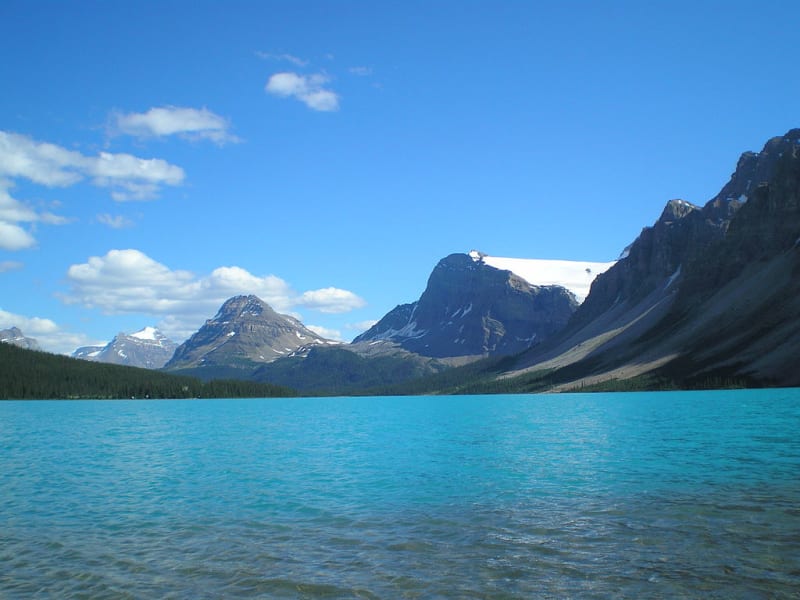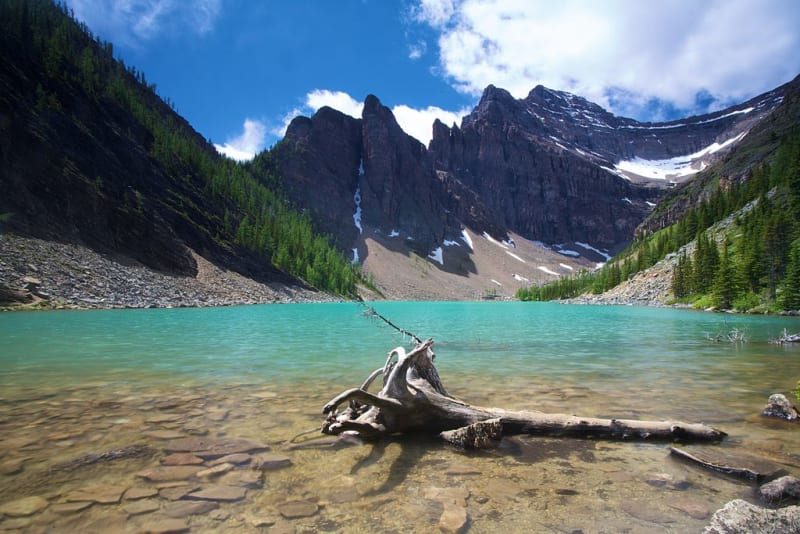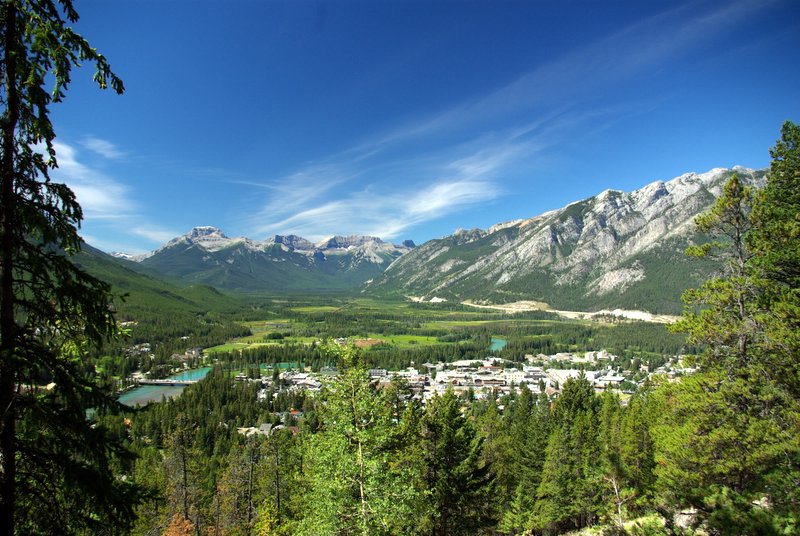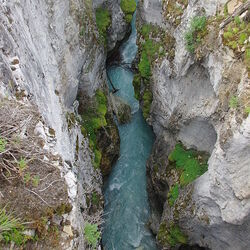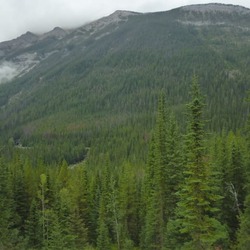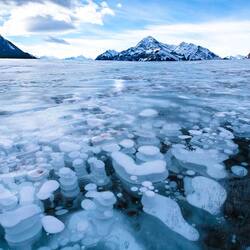Banff National Park
Banff National Park is Canada's oldest national park, established in 1885 in the Canadian Rockies. The park is located 110-180 km west of the city of Calgary in the province of Alberta, covers 6,641 km2 in a mountainous area with many glaciers and ice fields, dense coniferous forests and alpine landscapes. Neighborhood: adjacent to the west are local forests and Yoho National Park, Kootenay National Park to the south, and Kananaskis Country National Park to the southeast. The main commercial center of the park is the town of Banff in the Bow River Valley.
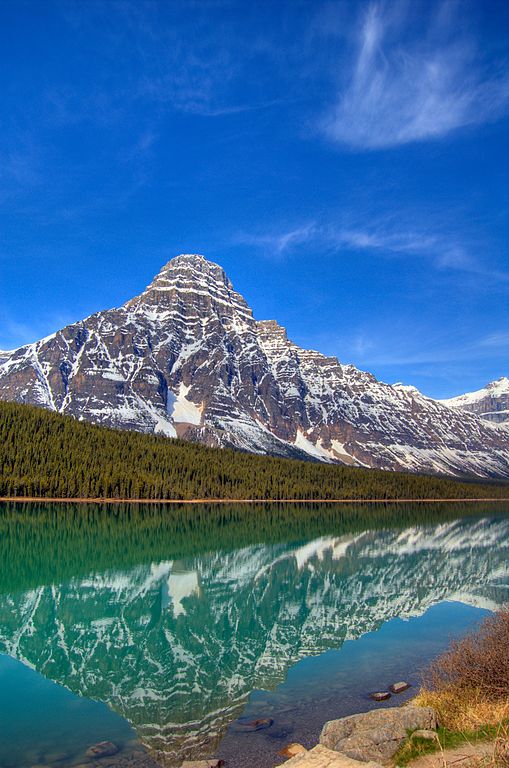
Throughout its history, Banff National Park has been shaped by compromises of interests between conservation and development. In 1885, Prime Minister John A. MacDonald decided to set aside a small reserve of 26 km2 around the hot springs near the cave and pool as a public park. By the Rocky Mountain Park Act, passed on June 23, 1887, the park was expanded to 674 km2 and named Rocky Mountain Park. It was the first national park in Canada, and the second established in North America, after Yellowstone National Park. In 1902, the park was expanded to 11,400 km2, covering the areas around Lake Louise and the Bow, Red Deer, and Kananaskis Rivers. In 1911, under pressure from those interested in grazing and logging, the size of the park was reduced by 4,663 km2 with the withdrawal of many foothill areas from the park. The boundaries of the park changed several times until 1930, when, after the adoption of the National Parks Act, the size of Banff was set at 6,697 km2. The law also renamed the park Banff National Park. During the construction of the new east gate in 1933, the Province of Alberta donated 0.84 km2 to the park. This, along with other minor changes to the park's boundaries in 1949, established the park's area at 6,641 km2. In 1984, Banff was included in the UNESCO World Heritage List, due to the mountain landscapes containing mountain peaks, glaciers, lakes, waterfalls, canyons and limestone caves, as well as taking into account the minerals found here. With this recognition, new commitments to nature conservation have been added.
Banff National Park has three climatic zones: the forest mountain belt, the subalpine belt and the Alpine belt. The subalpine belt, which consists mainly of dense forests, accounts for 53% of the area of Banff. 27% of the park is located above the tree line, in the Alpine belt. The tree line in Banff is approximately 2,300 meters high, with open meadows in the highlands and some areas covered by glaciers. A small part of the park (3%) is located at altitude, in mountainous ecoregions. The mountainous regions of Banff are dominated by pine forests, as well as willows, aspens, and sometimes fir trees interspersed with maples. Spruce trees are more common in the subalpine regions of Banff, with pines and fir trees present in some areas. Mountainous areas, which are usually the most preferred habitat for wild animals, have been significantly altered by humans over the years.

There are 56 described species of mammals in the park. Grizzlies and black bears live in forested regions. Cougar, lynx, wolverine, ferret, weasel, North American otter and wolves are the main predatory mammals. Moose, black-tailed deer, and white-tailed deer are widespread in the park's valleys, including around and sometimes in the city of Banff, while moose tend to be more inconspicuous, sticking primarily to wetlands and streams. Snow goat, bighorn, marmot, and pipit are widespread in the highlands. Other mammals such as beaver, porcupine, squirrel, chipmunk are the most commonly found small mammals. At least 280 species of birds can be found, including bald eagles and golden eagles, red-tailed buzzards, ospreys, falcons, and wildfowl - all are predators. The white-tailed partridge is the main bird often seen in the Alpine belt. Rivers and lakes are inhabited by more than a hundred different species, including loons, herons and mallards, which spend their summers in the park.
Banff National Park is Alberta's most visited tourist destination and one of the most visited national parks in North America, with up to 5 million visitors per year. Tourism in Banff is estimated to cost the Canadian economy 6 billion Canadian dollars per year. A park pass is required to stop at the park, and pass checks are frequent during the summer months. No permit is required if you need to walk straight through the park without stopping.
Attractions in Banff: Upper Hot Springs Hot Springs, a golf course at the hotel and three ski resorts. Day trips are very popular with visitors. Other activities include downhill and cross-country skiing, as well as horseback riding. Tourism and entertainment options in Banff include hiking, camping, mountaineering, rock climbing, and skiing. The management of Parks Canada obliges to use these campgrounds, huts of the Alpine Club of Canada or other facilities when purchasing a pass to protected areas. To use the campsites, they must be reserved in advance.
